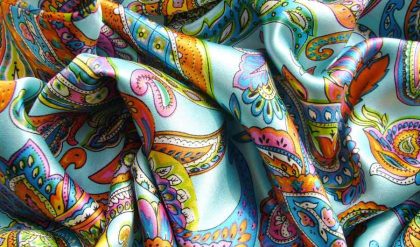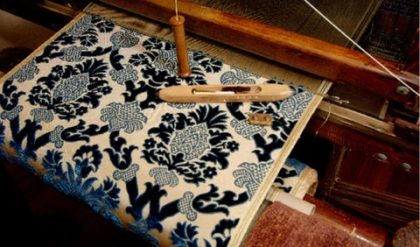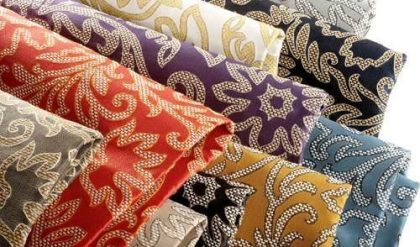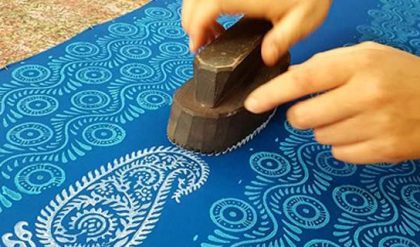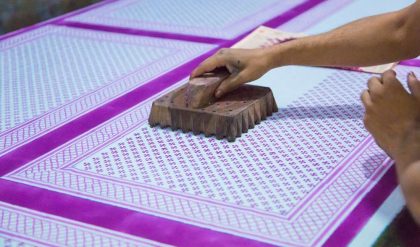Netting: is an open mesh form of fabric construction that is held together by knots or fused thermoplastic yarns at each point where the yarns cross each other.
Lace: is a derivative of netting. The technique of lace making involve looping, knotting, braiding, twisting or stitching thread into decorative open work patterns.
Crochet: is a simple form of warp knitting, usually done by hand. Basic fabric is made by forming a row of stitches with a length equal to the fabric width and then returning along the chain making double crochet stitches by inserting the needle into previous loops. The technique can create solid fabric or open lace like fabric.
Braiding: is a simple form of narrow fabric construction. The braid is created from a number of interlacing yarns. Braiding is used to create tubular structures such as hose pipes, shoe laces, cords or ropes. The simplest form of braiding is the plaiting of three strands.
Macramé: is created through a technique of knotting, macramé differs from other laces in texture and appearance. It is generally made of heavy yarn knotted into relatively large designs.
Fabric is the material that is used to make clothing or household articles. Woven fabrics are made by interlacing two sets of yarns at right angles to each other. The length wise yarns are called the warp yarns/ ends and the width wise yarns are called the weft yarns / filling / picks. The lengthwise edges of the fabric are the selvages. The machine on which the fabric is woven is called a loom.
The process of making the fabric on the loom is known as Weaving. There are many types of weaves used to make different kinds of fabrics like cambric, poplin, matt, satin, velvet, towels, denims, etc. There are three basic weaves. They are Plain weave, Twill weave and Satin weave.
All other weaves are a variation or a combination of these weaves. Knitted fabrics are described as structures produced by the interloping of yarns. Knitting has been a traditional method of producing items such as sweaters, underwear, hosiery and baby blankets. Knitted fabrics can be classified into two broad categories, Weft Knits and Warp knits. Some of the common knit fabrics are jersy knit, rib knit, interlock, jacquard and pique.
The art of producing fabrics directly from fibers matted together began before spinning and weaving were invented. Felting is the process of making fabric by the entanglement of fibers in the presence of heat, pressure and moisture.
Non-woven fabrics are adhesive bonded fabrics , in which the fibers are held together by a binder such as synthetic rubber, heat bonded fabrics using a mixture of manmade fibers with different melting points and needle punched fabrics, in which the fibers have been entangled by barded needles . All these non-woven fabrics have special uses such as interlinings and stiffeners for garments, disposable diapers or nappies, tea bags, bandages, hats, filters and carpets. Net, lace, crochet, braiding, macramé, are some decorative knit fabrics.
